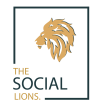
What is Brand Development?
The process of creating and strengthening your professional services as a brand is known as brand development. The process of helping businesses develop their brands can be divided into three phases.
- The first step is to ensure that your brand strategy is correct and aligned with your business goals.
- The second step is to create all of the brand communication tools you’ll need, such as your logo, tagline, and website.
- Finally, you’ll need to strengthen your newly created or updated brand.
How you go about completing these tasks is determined by your brand development strategy. We’ve broken down the brand development strategy into ten steps to make things a little easier.
1 – Look into your overall business strategy
Growing your company will be much easier if you have a strong and distinct firm. But what kind of firm are you? Is it your intention to grow organically? The context for your brand development strategy is your overall business strategy. If you know where you want to take your firm, your brand will assist you in getting there.
2 – Know your target audience
Who is your target audience? If you say “everyone,” you’re making a huge mistake. According to research, having a clearly defined target audience is a priority for high-growth, high-profit companies. The narrower the focus, the faster the growth. As your target audience becomes more diverse, your marketing efforts will be diluted. So, how can you tell if you’ve chosen the right target market? This is where the following step comes into play.
3 – Run a research on your target audience
Understanding your target audience’s perspectives and priorities, anticipating their needs, and crafting a message that resonates with them can all be aided by research. It also reveals how the audiences perceive your company’s strengths and current brand. Hence, the marketing risk associated with brand development is significantly reduced.
4 – Position your brand
You can now determine your firm’s brand positioning in the professional services market (also called market positioning). What sets your company apart from the competition, and why should your target audience choose you?
A positioning statement encapsulates the essence of your brand positioning. It must be realistic because you will be held accountable for your promises. It should also be aspirational, giving you something to strive for.
5 – Build your communication strategy
The next step is to develop a communication strategy that translates your brand positioning into messages for different target audiences.
While your core brand positioning must be consistent across all audiences, different aspects of it will help spark their interest. The most important points will be emphasized in the message framed for each audience. Each audience will have unique concerns that need to be addressed, and each will require different types of evidence to back up your claims. All of these requirements should be addressed in your communication strategy. This is an essential step in making your brand relevant to your target audience.
6 – Think of a New Name, Logo and Tagline
Many businesses do not require a name change. A name change may be necessary if you are a new firm, going through a merger, or have a name that no longer fits your positioning. Even if you don’t change your company name, a new logo and tagline to better support your brand positioning might be beneficial.
Keep in mind that your name, logo, and tagline do not constitute your brand. They are a part of your brand identity or the ways in which your brand is communicated or symbolised.
7 – Build a content marketing strategy
Content marketing is especially well suited to professional services firms in the digital age. It does everything traditional marketing does, but better. Providing valuable educational content attracts audiences.
Understand that your brand’s strength is determined by its reputation as well as its visibility. It’s extremely rare to achieve increased visibility without also improving your reputation. That’s why traditional “awareness-building” advertising and sponsorships are frequently ineffective. Content marketing, on the other hand, improves both visibility and reputation. It’s also a great way to make your brand more appealing to your target audience.
8 – Build up a website
The most important tool for establishing your brand is your website. It’s where your audience can learn more about what you do, how you do it, and who your customers are. Clients are unlikely to pick your firm solely based on its website. You may be disqualified if your website sends the wrong message.
Your website will also house your important content. Your search engine optimization (SEO) efforts will be focused on that content, allowing potential customers, employees, and referral sources to find you and learn more about your business. Online content is an essential component of any modern brand development strategy.
9 – Build your marketing toolkit
The remaining components of your marketing toolkit must now be completed. One-page “sales sheets” could be included to describe core service offerings or key markets served. An e-brochure about the firm, as well as a brief “pitch deck” that overviews the firm or key offerings, may be included. These items are no longer widely available.
Videos are increasingly being included in this marketing toolkit. Popular video topics include firm overviews, case studies, and “meet the partner” videos. The main service offerings are also very useful. If properly prepared, these tools can aid not only in business development but also in brand development.
10 – Implement your brand strategy
This is the most crucial step in the branding process. A winning brand development strategy is pointless if it is never put into action. You might be surprised how often this happens. A solid strategy is developed and implemented with all the good intentions the company can muster.
So, here were the 10 steps to developing brand strategies for your business to achieve growth and profit. If you are seeking someone to help you tailor your brand strategy, The Social Lions is the right place for you. Get in touch with us today.

